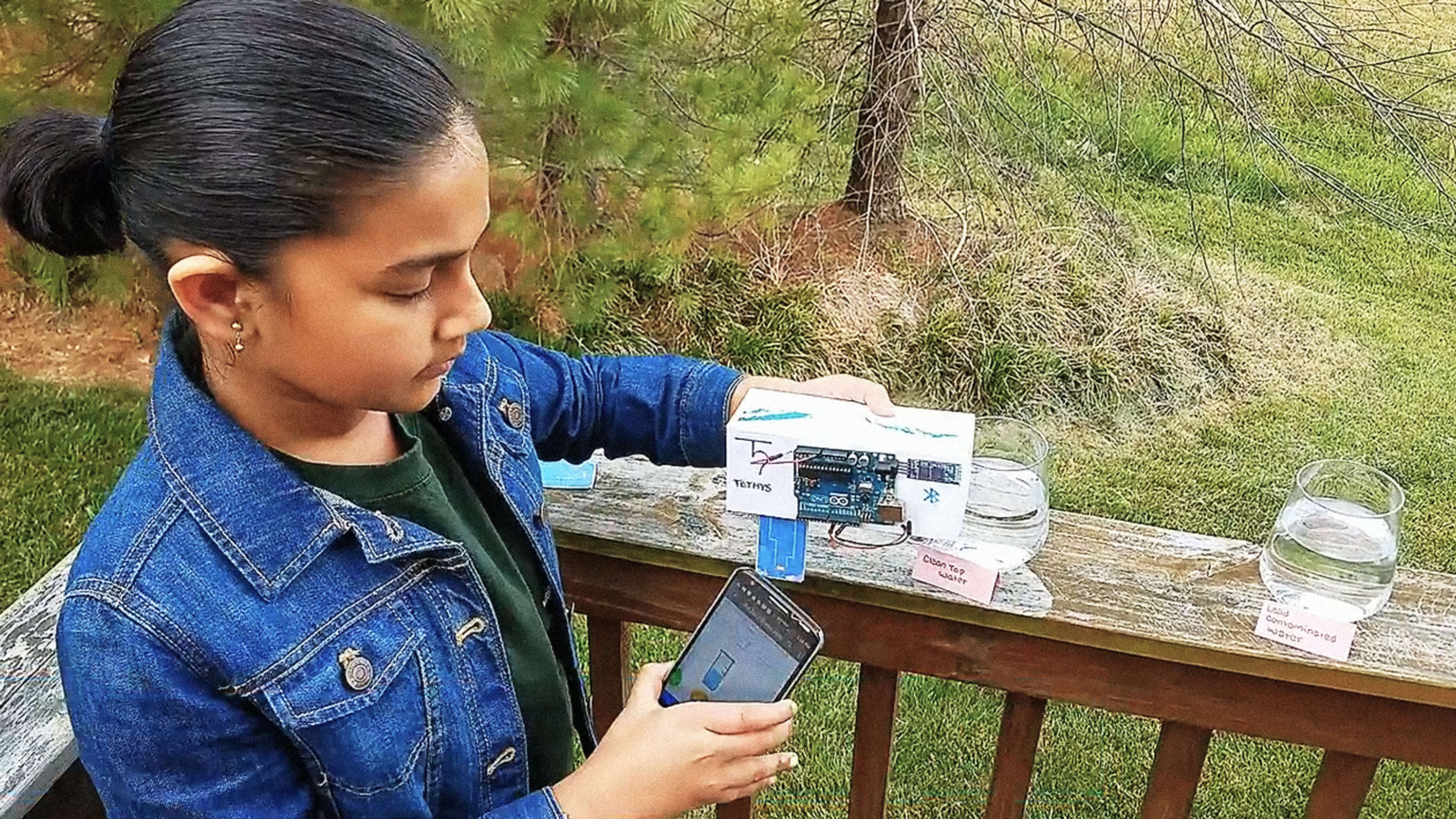Unlike most 11-year-olds, Gitanjali Rao likes to spend some of her free time reading MIT’s material science department website. That’s where Rao learned about a recently-developed type of nanotechnology–and realized that it could be used for a new purpose.
Rao’s invention, called Tethys, envisions using carbon nanotube sensors similar to those developed by MIT and others–tiny carbon tubes a few billionths of a meter in diameter–to detect lead in water. A small Arduino processor (a simple computer kit) connects to the nanotubes, and a Bluetooth attachment sends the results to a smartphone. Nearly instantly, you can know if your water is safe to drink. The idea made Rao a finalist in the Discovery Education 3M Young Scientist Challenge.
“Before I had the idea for my solution, I noticed articles about how there was no solution to detect lead in water that is fast, easy, and inexpensive,” Rao, who recently graduated from sixth grade, tells Fast Company. “I was appalled by the fact that there was no easy or effective solution. I did a little more research and I found out that Flint, Michigan wasn’t the only place with lead contamination. There were tons of places worldwide with water quality issues. I knew I wanted to solve this.”
In the U.S., a 2016 report found that more than 5,000 community water systems–serving 18 million people–violated the federal Lead and Copper Rule, which tracks failures to test for lead, report results to citizens, or reduce unsafe levels of lead, along with violations related to copper. Another investigation found that nearly 2,000 communities had unsafe levels of lead in tests over the last four years; some of the highest levels were found at schools. An elementary school in Maine had levels 42 times higher than the limit that the EPA considers safe.
The biggest challenges lie in replacing outdated infrastructure. But Rao realized that people also need better options for testing water, as well. In some cases, local water utilities will come to your home and test water for you–under federal law, utilities are supposed to do this for a sample of homes in communities that are at high risk for lead. Some state or local regulations also mandate testing, such as a short-term initiative in California that allows schools to receive free testing on request. But many utilities have been criticized for cheating on lead tests. If you’d like to test water quality yourself, a typical option is a kit that has to be mailed to a lab while you wait for results for a week or longer; though a kit might cost $10, lab analysis can cost another $40 or more. A box of simple test strips can be cheaper and faster, but not necessarily accurate.
When Rao learned about MIT’s carbon nanotubes, which were designed to detect hazardous gases, she realized that something similar could also be used to detect lead. “When you dip [my invention] into water contaminated with lead, the lead molecules should have a great impact on the current, and it should cause more resistance in the flow of current,” she says. The device would send the results to a smartphone, displaying whether the water is safe or poor quality, requiring someone to flush tap water and avoid using it in cooking. At lead levels higher than 15 parts per billion, the device would warn someone that the water was unsafe and tell them to contact their utility.
While the part of the device that dips into water would have to be replaced each time it is used, the rest is reusable. Rao estimates that the kit could potentially cost as little as $20, or less at scale. At the moment, it’s just a concept, but Rao, who is working with a mentor at 3M, hopes to develop it for production.
“I really am interested in making it into a product that people can buy,” she says. “I believe that it would make the process so much easier, and I believe that everyone has a right to know if their drinking water is safe or not.”
Recognize your brand’s excellence by applying to this year’s Brands That Matter Awards before the early-rate deadline, May 3.
